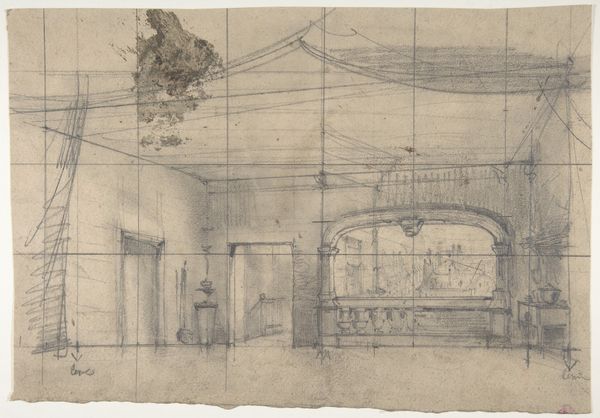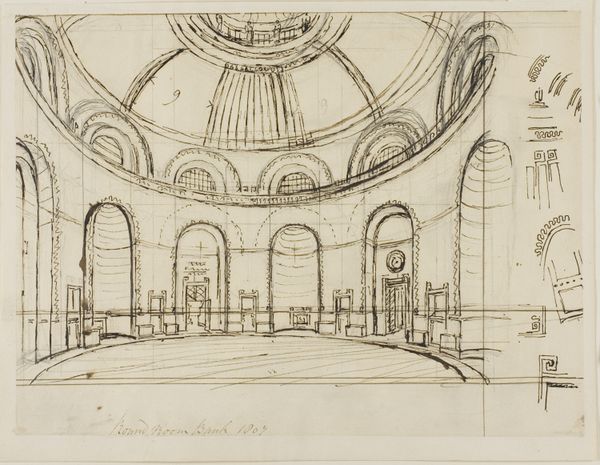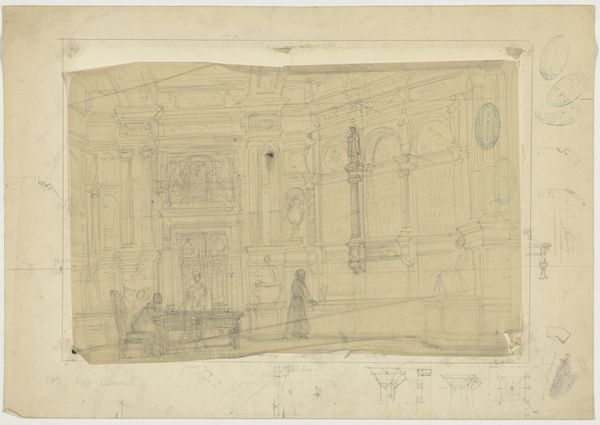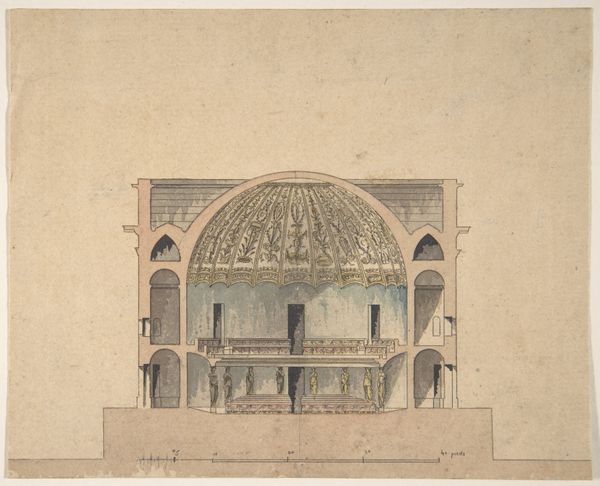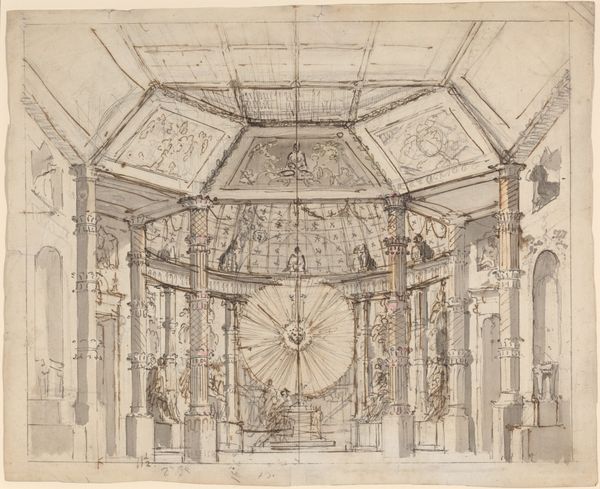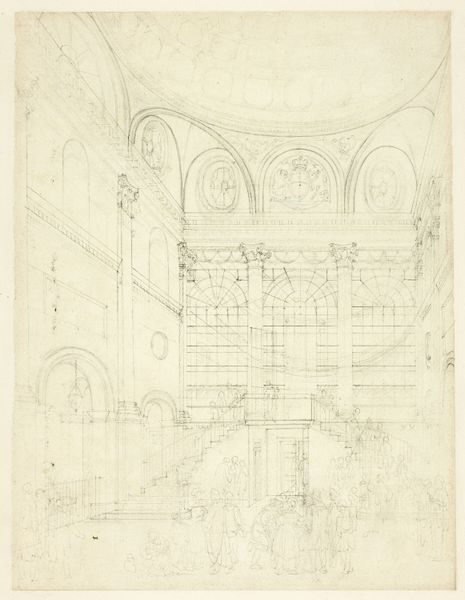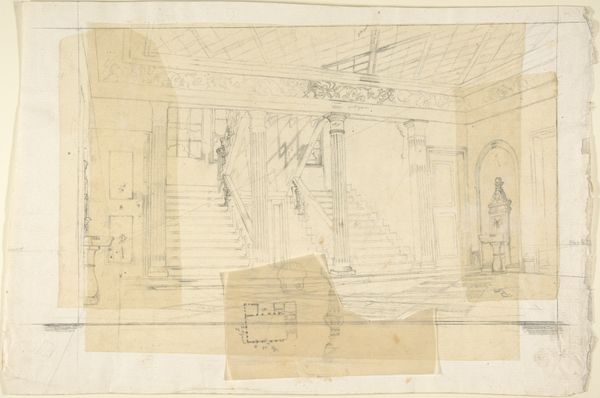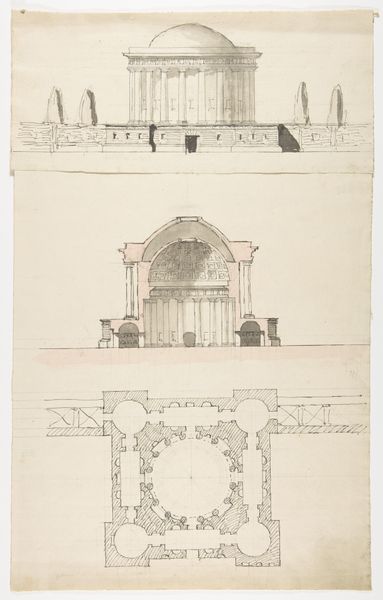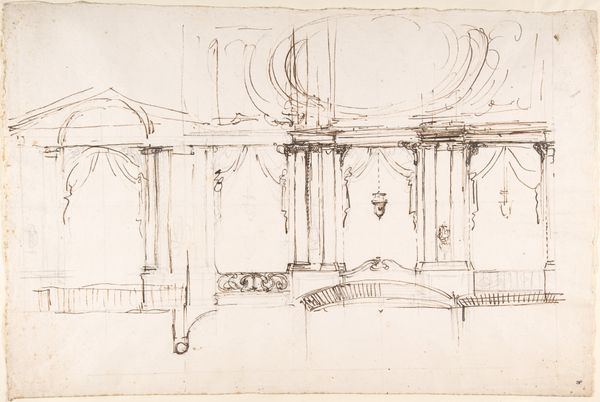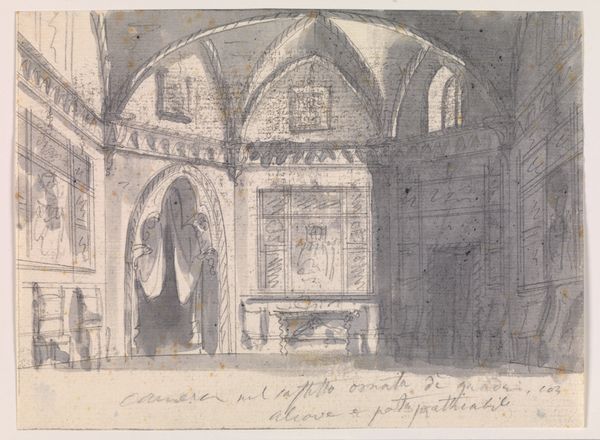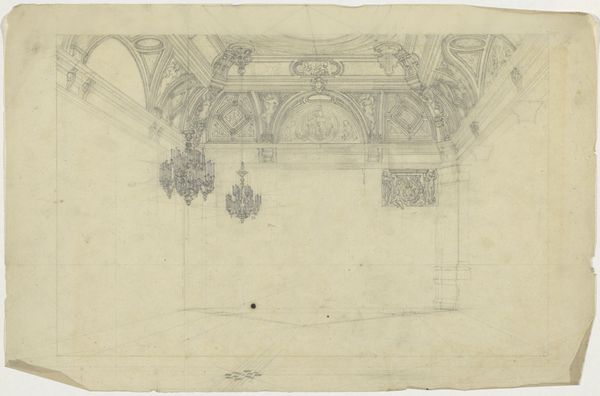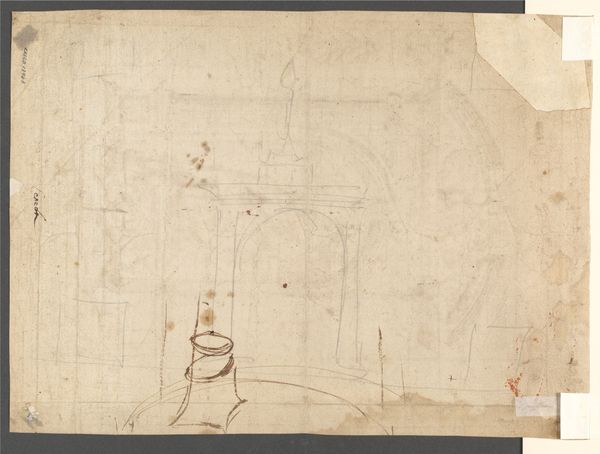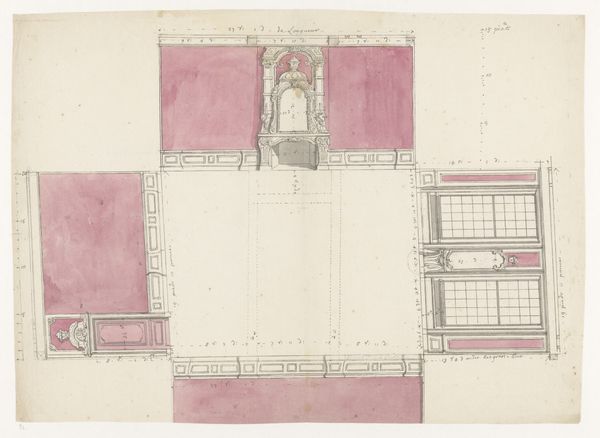
drawing, print, watercolor
#
drawing
# print
#
watercolor
#
classicism
#
history-painting
Copyright: Public Domain
Editor: This is Eugène Cicéri’s “Design for a Stage Set,” likely created sometime between 1830 and 1890. It’s a drawing, print, and watercolor combination piece held at The Met. The architectural space feels really formal, and almost sterile with the strong grid underlying the design. What are your thoughts on its historical context and significance? Curator: Well, given the classical architectural style, evident in the arches and ornamentation, we might consider how such imagery served particular social functions. The grid you noticed is interesting. Stage design, even on paper, served to reinforce ideals. This architectural rendering probably aimed to evoke authority, and taste—a visualization of cultural capital during a time of massive political shifts. Who would the design be catering to? Editor: That's interesting. I was initially just thinking about the aesthetic, but of course, theaters serve as public spaces for all kinds of audiences. Do you think the artist had a specific historical play or performance in mind with this set? Curator: Possibly. The imagery leans heavily on historical painting themes and a somewhat sanitized version of classicism. Knowing Cicéri's role in Parisian theatre, it’s possible he aimed for works promoting national identity. The architecture isn’t inherently tied to a single event, allowing for adaptable ideological uses. This flexibility in design could suggest shrewd marketing targeted at diverse audiences or shifting political regimes. How might the space accommodate or exclude certain demographics? Editor: So the space itself becomes a tool of social control through design? That gives me a new appreciation for how art engages in social and political discourse. Thank you for broadening my understanding. Curator: My pleasure! It’s a great reminder that art often reflects the values and power structures of its time. I learned a bit too about the power of simple imagery to signal authority.
Comments
No comments
Be the first to comment and join the conversation on the ultimate creative platform.
